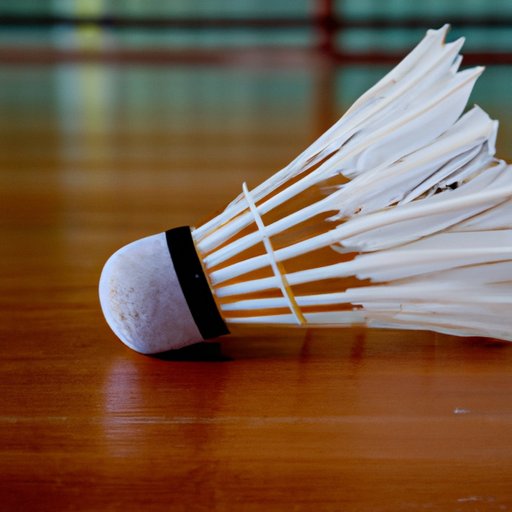
I. Introduction
Badminton is a fun and engaging sport that can be enjoyed by people of all ages and skill levels. It is played with a racket and a shuttlecock, with the objective being to hit the shuttlecock over the net and into the opponent’s court. This article is a beginner’s guide to playing badminton, covering everything from the rules of the game to proper techniques, common mistakes to avoid, and how to improve your skills. Whether you are new to the sport or looking to brush up on your skills, this guide will provide you with the knowledge you need to get started.
II. The Rules of Badminton
Before you begin playing badminton, it is important to understand the basic rules of the game. The court is divided by a net and is 44 feet long by 20 feet wide for singles play and 44 feet long by 24 feet wide for doubles play. The scoring system is based on a best-of-three or best-of-five game format, with the first player or team to reach 21 points winning the game. Serving rules dictate that the shuttlecock must be hit below the player’s waist and diagonally across the court to the opponent’s court.
III. Holding the Racket and Serving
Proper technique for holding the racket is essential for effective play. The grip should be firm yet relaxed, with the thumb resting lightly on the handle and the fingers wrapped around. Serving is also a critical part of the game, with players trying to hit the shuttlecock over the net and into the opponent’s court to start each point. Proper technique for serving includes a firm yet fluid motion, with the shuttlecock being struck cleanly to achieve maximum accuracy and power.
IV. Footwork Basics
Footwork is an essential aspect of playing badminton, as it allows players to move quickly and efficiently around the court for optimal positioning and shot selection. Proper stance and movement around the court should be practiced to ensure that players are always in the right spot to execute their shots. Additionally, specific exercises can be performed to improve agility and speed.
V. Hitting Different Types of Shots
Badminton involves a variety of shots, each with its own unique characteristics and uses. Clear shots are used to send the shuttlecock high and deep into the opponent’s court, while drop shots are used to place the shuttlecock near the net. Smashing is a powerful shot that aims to end the rally, while backhand shots require a specific technique and practice to master.
VI. Common Beginner Mistakes and How to Correct Them
As with any new skill, there are common mistakes that beginners make when playing badminton. Overhitting and underhitting are two of the most common errors, as are poor footwork and not anticipating the opponent’s shots. Tips for correcting these mistakes include practicing regularly, watching videos of skilled players, and playing with more experienced players to learn from their techniques.
VII. Training and Improvement
To improve your badminton skills, it is essential to practice regularly and focus on specific areas that need improvement. A variety of drills can be performed to increase accuracy, power, and speed. Additionally, focusing on footwork and court movement can help players to be more efficient and effective in their play.
VIII. Benefits of Playing Badminton
There are many benefits to playing badminton, including improved cardiovascular and overall fitness, social connections, and team building. Playing badminton is a fun and engaging way to stay active and can be enjoyed with friends, family, and colleagues.
IX. Conclusion
Badminton is a fantastic sport for people of all ages and skill levels to enjoy. With its simple yet challenging gameplay, it offers a fun and engaging way to stay active and healthy. By mastering the rules, techniques, and skills necessary for play, and practicing regularly, players can improve their abilities and reap the many benefits of this exciting sport.




